Estadio Ciudad de Málaga
| Capacity | 10 816 |
|---|---|
| 7562 (Main stand) | |
| Country | Spain |
| City | Málaga |
| Clubs | Club Atletismo Málaga |
| Inauguration | 23/06/2005 |
| Construction | 2003–2009 |
| Cost | €23.5 M (€25.4 M) |
| Contractor | Acsa, Pamasa, Gea 21 / Anfrasa |
| Address | Calle Miguel de Merida Nicolich s/n, 29004 Málaga |
Advertisement
Estadio Ciudad de Málaga – stadium description
What does the Estadio Ciudad de Málaga look like in a nutshell?
Estadio Ciudad de Málaga is the largest athletics stadium in Málaga. The facility is located in the southern part of the city and has one large grandstand that can accommodate more than 7,500 spectators. Together with the low earthen embankments around the running track, the capacity of the venue exceeds 10,000 spectators.
The stadium was built with great difficulty between 2003 and 2009, and the first competition (the Spanish athletic championships) was held there as early as June 2005, when it was not yet fully completed. The facility has had the opportunity to host several major athletics competitions, and it has also hosted football and rugby matches.
How was the Estadio Ciudad de Málaga built?
The construction of Málaga's new athletics stadium was made possible by an agreement between the Regional Government of Andalusia and the City Council. The facility was to be built in the south part of the city, next to the Palacio de Deportes José María Martín Carpen, which opened in 1999.
The cornerstone for the facility was laid jointly on December 3, 2003 by Antonio Ortega, head of the Regional Council for Tourism and Sports (Consejero de Turismo y Deporte de la Junta de Andalucía), and Francisco de la Torre, alcade (mayor) of Málaga.
The stadium, according to initial plans, was to be ready as early as the beginning of 2005, so that the Spanish athletic championships, scheduled for July 2005, could be held there. In the summer of 2006, meanwhile, the stadium was to host the European Athletics Cup.
When were the first events held at the Estadio Ciudad de Málaga?
The construction encountered quite a few problems – the facility finally managed to be approved for use just before the national athletics championships, although it was still largely unfinished at the time – the upper part of the main stand was completely missing, and there was no canopy over it.
The Spanish championships were held at the stadium on July 23–24, 2005, after which construction continued, and the National Sports Council (Consejo Superior de Deportes) also decided to contribute to the investment costs.
Construction encountered further delays, much of which was caused by strikes at nearby quarries in late 2005 and early 2006, which almost completely paralyzed the region's construction industry.
The next scheduled event, the European Athletics Cup, was held at the stadium on June 28–29, 2006, but the stadium was again not completed on time – although the roof skeleton over the main stand was ready, it still lacked sheathing.
The stadium also hosted the start of the Vuelta a España cycling race in August 2006.
Why was the deal with the stadium's contractors broken?
After the summer competitions, the construction of the stadium was supposed to continue, but the consortium of companies responsible for the construction (Acsa, Pamasa and Gea 21), carried it out from then on in a very dilatory manner, and in addition began demanding additional money.
As a result of the contractors' default, the authorities broke the construction contract on January 2, 2007.
When was the Estadio Ciudad de Málaga completed?
In December 2007, a new contractor, Anfrasa, was selected to complete the project.
After the new contractor took over the construction site, problems with the soft ground on which the stadium was being built came to light – it became apparent that the roof framing would have to be demolished and reinstalled.
The stadium was finally completed in time for the Andalusian Athletics Grand Prix, held on June 27, 2009.
How much did it cost to build the Estadio Ciudad de Málaga?
The total cost of building the stadium was more than €19.5 million. In addition, in 2016 the court obliged the authorities to pay nearly €4 million to the companies with whom the contract was broken in early 2007.
What changes has the Estadio Ciudad de Málaga undergone?
In the summer of 2018, prior to the World Masters Athletics Championships, the stadium's athletics track surface was replaced and given a blue color (it was previously red).
What changes were taking place around the Estadio Ciudad de Málaga?
Before the stadium was fully completed, a swimming complex (Centro Acuático de Málaga) was built next to it, which opened in 2008. In addition, on July 30, 2014, the Palacio de los Deportes metro station (along with the new Line 2) opened near the stadium.
What events have been held at the Estadio Ciudad de Málaga?
The most important athletics events held at the stadium were the European Cup in 2006, the Spanish championships in 2005 and 2011, and the World Masters Athletics Championships in 2018.
The stadium is home to Club Atletismo Málaga, which organizes the Meeting Internacional “Ciudad de Málaga”.
The stadium is also used for football. In the 2009/10 season, the women's football team Club Atlético Málaga, then performing in the Primera División, played there. The stadium is also used by local teams as a training facility, plus it has hosted several friendly matches between national teams.
The facility has also occasionally hosted rugby competitions: in 2022 it hosted matches as part of the Spain Sevens tournament, and on November 19, 2016 a rugby union test match between the Spanish and Uruguay national teams was played here (33–16).
What does the Estadio Ciudad de Málaga look like?
The stadium is equipped with a football field and a tartan, blue-colored running track. On the west side there is a two-story grandstand that is largely covered by an elliptical roof and can seat 7,562 fans.
On the other sides, the track is flanked by low earth embankments, together with which the venue's capacity is 10,816 spectators. Four lighting masts stand at the corners of the stadium, and floodlights have also been installed at the edge of the main stand's roof.
Underneath the main stand are training facilities, including a 100-meter-long athletics track.
How is the Estadio Ciudad de Málaga located?
The stadium is located in the southern part of Málaga, between two other large sports venues: an indoor arena (Palacio de Deportes José María Martín Carpena) and a swimming complex (Centro Acuático de Málaga).
The property is located close to the banks of the Guadalhorce River, near its confluence with the Mediterranean Sea. Not far from the stadium is the Palacio de los Deportes metro station, which is the terminus of Line 2, and the MA-20 expressway runs nearby. Málaga Airport is also relatively close by.
Advertisement
Pictures
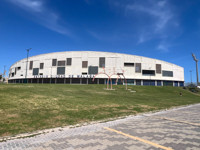
08.04.2025 © Kuba Kowalski 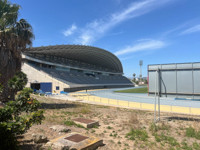
08.04.2025 © Kuba Kowalski 
08.04.2025 © Kuba Kowalski 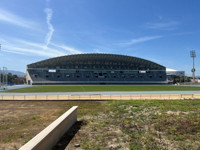
08.04.2025 © Kuba Kowalski 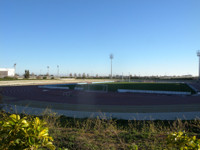
31.01.2013 © Ricardo Ricote Rodríguez (CC BY 3.0) 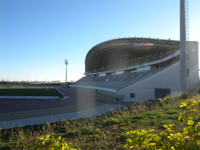
31.01.2013 © Ricardo Ricote Rodríguez (CC BY 3.0) 
27.02.2010 © Miwipedia (CC BY-SA 4.0) 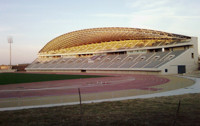
15.04.2009 © Miwipedia (CC BY-SA 4.0) 
07.08.2011 © Frog17 (CC BY-SA 4.0)
Related news
2025
-
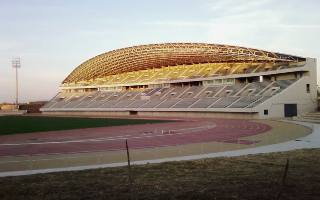
Spain: Málaga withdraws from hosting 2030 FIFA World Cup
Málaga has officially withdrawn from the race to become a host city for the 2030 FIFA World Cup, which will be jointly organized by Spain, Portugal, and Morocco. As announced by the city's mayor, Francisco De la Torre, the decision was made because hosting the World Cup poses a risk to the club and a burden to the fans, “and it’s not worth it.”
-
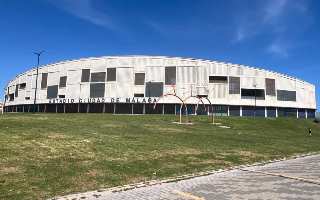
Spain: Temporary stadium for Málaga CF is too small
Málaga CF has issued an official statement responding to reports that the Ciudad de Málaga athletics stadium, to be used temporarily during the redevelopment of La Rosaleda for the 2030 World Cup, will only accommodate 12,500 spectators.
-
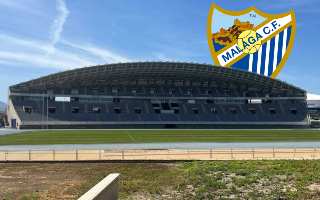
Spain: Half of Malaga CF's socios won't fit in the stadium. Fans react
Malaga fans' worst nightmare has come true. The redevelopment of La Rosaleda for the 2030 World Cup is forcing the club to move to an athletics stadium which, contrary to earlier announcements, will not be substantially expanded. The spectre of financial, sporting and social problems hangs over the Boquerones.
-
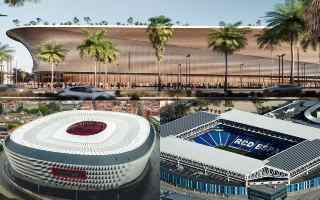
Spain: New La Rosaleda will be more expensive than San Mamés
The regional government, City Council and Province Deputation have prepared a draft agreement detailing the costs of the Nueva Rosaleda. The cost will be higher than that of the RCDE Stadium and even San Mamés, but politicians are hopeful that Málaga will join in the investment as co-owner of the stadium.
-
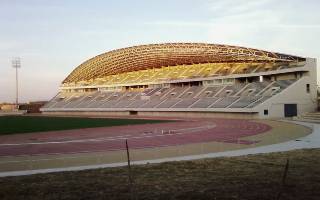
Spain: Málaga to play at Ciudad de Málaga during La Rosaleda renovation
Málaga CF has confirmed where they will host their home matches during the planned renovation of La Rosaleda, set to begin in preparation for the 2030 FIFA World Cup. The club will move temporarily to Ciudad de Málaga stadium, but not until the 2026/2027 season.

 StadiumDB
StadiumDB